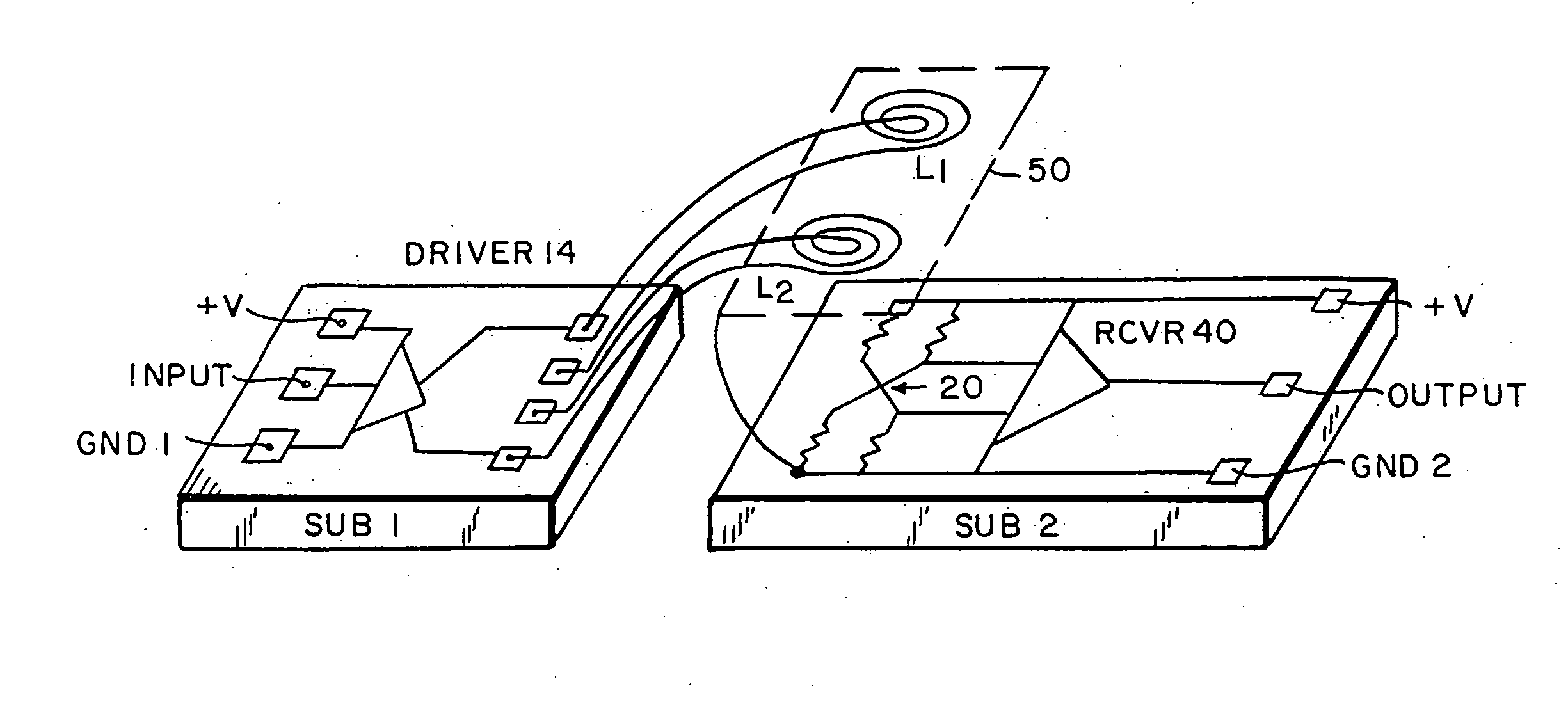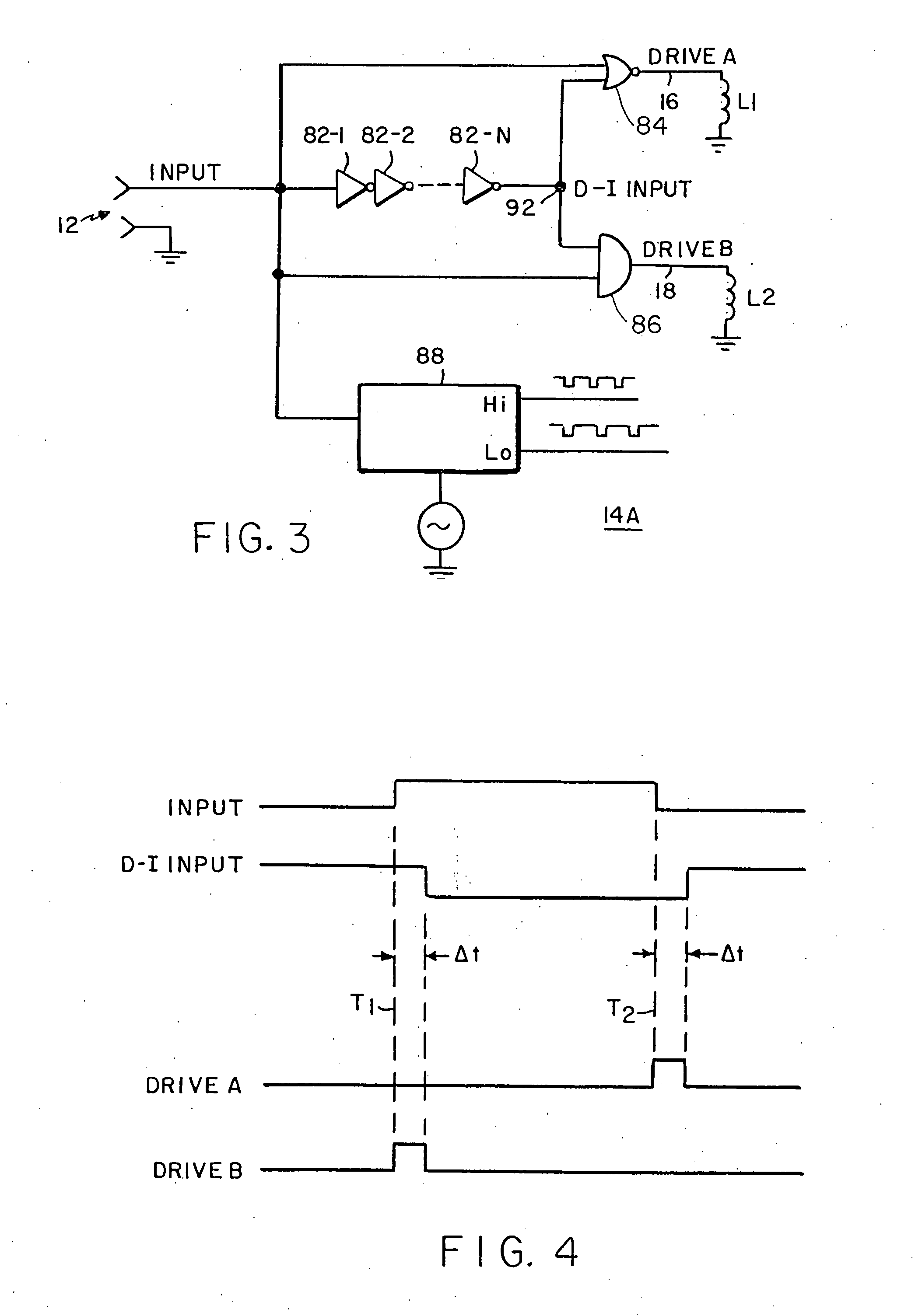Chip-scale coils and isolators based thereon
a technology of isolators and coils, applied in the field of coils, can solve the problems of affecting the cost of manufacturing an isolator, and essentially waste of the die area, so as to improve transformer performance, reduce the capacitance of coils, and reduce the loss of substrates
- Summary
- Abstract
- Description
- Claims
- Application Information
AI Technical Summary
Benefits of technology
Problems solved by technology
Method used
Image
Examples
Embodiment Construction
[0039] As this invention improves upon that shown in U.S. patent application Ser. No. 09 / 838,520, we shall first review appropriate portions of the disclosure from that application. Some of those portions relate to isolators which use elements other than coils to establish the isolation barrier, but they show input and output circuitry and signals usable with transformer-based isolators, as well.
[0040] An exemplary implementation of an isolator 10 using coil-type field-generating and MR field-sensing (receiving) elements is illustrated schematically in FIG. 1. An input voltage is supplied at port 12 to a magnetic field generator 13, comprising an input driver 14 and one or more coils L1, L2. Driver 14 supplies output signals DRIVE A and DRIVE B on lines 16 and 18, respectively, to respective coils L1 and L2. Each of coils L1 and L2 generates a magnetic field which is sensed by a bridge 20 formed by MR elements 22, 24, 26 and 28. Elements 22 and 24 are connected in series across the...
PUM
| Property | Measurement | Unit |
|---|---|---|
| resistivity | aaaaa | aaaaa |
| dielectric | aaaaa | aaaaa |
| magnetic field | aaaaa | aaaaa |
Abstract
Description
Claims
Application Information
 Login to View More
Login to View More - R&D
- Intellectual Property
- Life Sciences
- Materials
- Tech Scout
- Unparalleled Data Quality
- Higher Quality Content
- 60% Fewer Hallucinations
Browse by: Latest US Patents, China's latest patents, Technical Efficacy Thesaurus, Application Domain, Technology Topic, Popular Technical Reports.
© 2025 PatSnap. All rights reserved.Legal|Privacy policy|Modern Slavery Act Transparency Statement|Sitemap|About US| Contact US: help@patsnap.com



